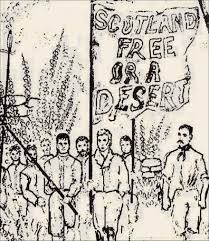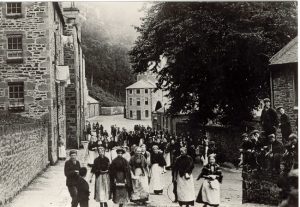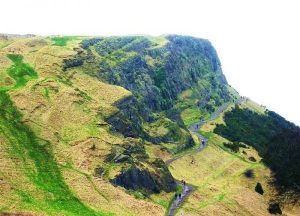Many of you will not of heard of this, what the government called the Scottish insurrection of 1820. Though if you are from or been to Edinburgh you certainly will have heard of the Radical road around Arthur’s Seat.
The actual Radical War only lasted a few days but despite it almost being written out of history it has left its mark. It started late on Saturday the 1st April 1820 when a Committee of Organisation for Forming a Provisional Government put up placards calling for a national strike as a result of social unrest from workers fed up with unjust pay, working and living conditions from the government.

Lets step back a minute to look at a bit of the background. From the late 18th century it was clear that there was change in the air. There had been the American revolution in 1776, the French revolution of 1789 and the Napoleonic wars, but with this also came an economic depression.
During the 18th century, artisans such as hand loom weavers, worked to commission and so could set their own hours of work which often left them time to read, and debate what they had read with friends, put the world rights. Clubs and societies started popping up with reformist ideals becoming more prevalent. With the industrial revolution in Scotland also well under way the future should look bright.
Between 1800 and 1808 the average wage of a weaver halved, and the devaluation of their work continued in the next decade until the situation became unbearable. In 1813, a general strike of an estimated 40,000 weavers lasted nine weeks, until the authorities arrived and arrested the leaders, and so the workers returned to work. As the economic recession continued to grip Scotland, the situation worsened, and in 1816 another gathering of, estimated, 40,000 turned up at Thrushgrove near Glasgow, demanding reform. To no avail.
Then came along a covert group called the Committee for Organising a Provisional government, which consisted of committed radicals, elected by their respective unions, who thought they would be the ones to organise the new social structure of Scotland in the aftermath of a successful workers revolution. This group met on the 21st March in Marshalls Tavern in Glasgow’s Gallogate. However, it seems that there was a spy among them, it is thought John King, a weaver from Anderston. He left just before the tavern was raided and the Committee arrested, this was kept secret from the public.
Another meeting took place on the 23rd March at Glasgow Green to draft a proclamation. This seems strange as the members of the committee were secretly detained at the time. There is a theory that the government of the time actually incited the whole thing to flush out the hard core radicals. However, it is possible that the proclamation was drafted in prison or had been produced before the arrest. Anyway, the Proclamation was posted all around Glasgow late on Saturday 1st April and come Monday 3 April work stopped, especially in the weaving communities with an estimated total of around 60,000 stopping work. They didn’t just refuse to work, but were also, in many cases, preparing for war. Reports came in of groups of men engaged in military drills, and making weapons such as pikes from any material that could be obtained. Revolution was coming.

The next day a group of radicals marched to the Carron Works in Falkirk, where they could obtain arms for the coming battles. Meanwhile sixteen Hussars and sixteen Yeomanry troopers had been ordered on 4 April to leave Perth and to go and protect Carron. They left the road at Bonnybridge early on 5 April and made straight for the slopes of Bonnymuir. As the newspapers subsequently reported;
“On observing this force the radicals cheered and advanced to a wall over which they commenced firing at the military. Some shots were then fired by the soldiers in return, and after some time the cavalry got through an opening in the wall and attacked the party who resisted till overpowered by the troops who succeeded in taking nineteen of them prisoners, who are lodged in Stirling Castle. Four of the radicals were wounded”. Glasgow Herald
This was the Battle of Bonnymuir, it was nothing more than a skirmish, a force of 32 soldiers, after a volley of shots from the radicals, easily overpowered them with a cavalry charge. Two soldiers and four radicals were wounded. In total, 19 of the radicals were taken prisoner and sent to Stirling Castle. Not much of a revolution but there were other isolated disturbances were taking place across West and Central Scotland but the government seemed always to be one step ahead. With the leaders of the revolution having been in prison since 21st March and those leading the rising outside now arrested this it was over. The unjust working conditions and rights of men would remain the same for some and a lot worse for others.

So what has this got to do with the Radical Road in Edinburgh? Well, this came about in 1822 when the pageant that was king George IV coming to Edinburgh was being arranged. One of the organisers, you might have heard of him, Sir Walter Scott came up with the idea of building a road around Arthurs Seat for recreational walks. To build this he suggested that they use the unemployed weavers of the Radical war. Which is where it now gets its name.
